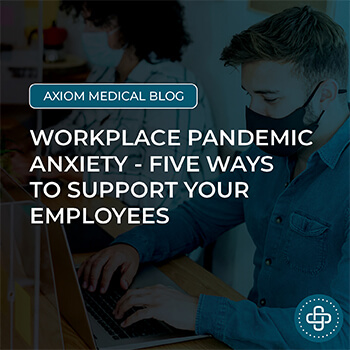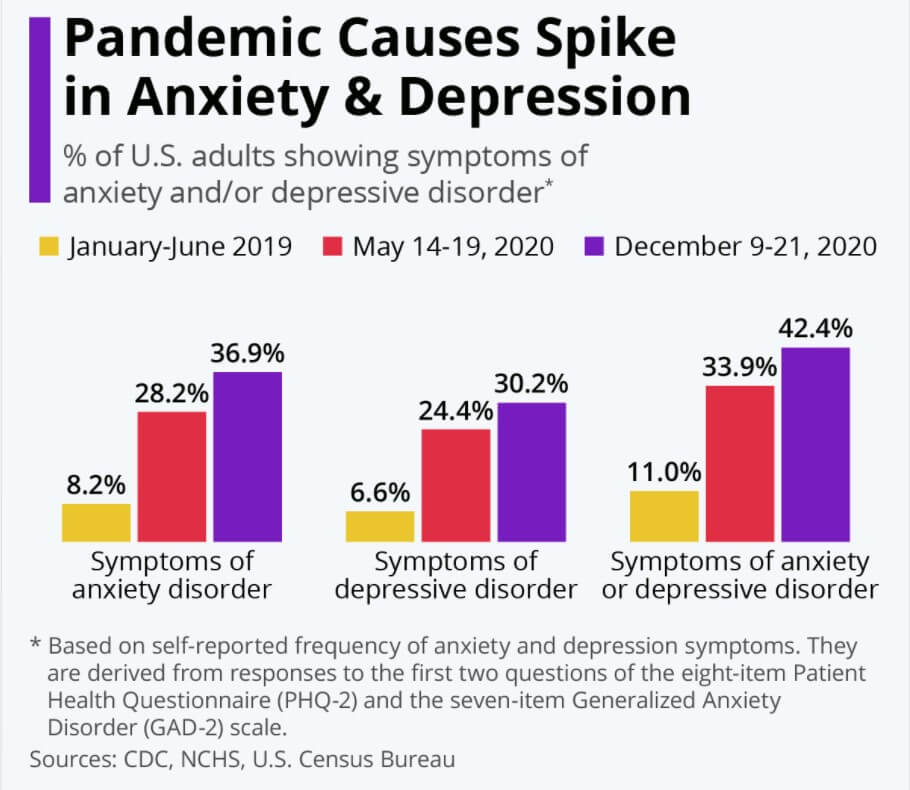Whether you are a remote worker or going to the office, COVID-19 workplace pandemic anxiety certainly has significant impacts on the way we work. The pandemic not only poses a major health risk to our community, but it also brings fear and anxiety about this new decade-defining disease. Combined with other strong emotions, work-related pandemic fears and depression can be overwhelming. This post will discuss how you can support employees and help them cope with workplace pandemic anxiety.
Why Are Your Employees Facing Pandemic Anxiety?
Undoubtedly, the COVID-19 pandemic has a significant impact on our family and work lives. Fear of losing jobs, uncertainty about the future, and work pressure due to remote working schedules can be stressful and overwhelming. Such significant lifestyle changes often cause strong emotions in both adults and children. Social distancing and other similar public health actions often make us feel isolated and negatively impact our mental health.
Some of the causes of pandemic anxiety include:
- Job security and uncertainty of employment/job loss
- Pandemic health issues and concern about getting exposed to the virus at work
- Changed work schedules
- Lack of support and feeling lack of visibility due to remote working
- Taking care of virtual schooling while working
- Managing high workload due to workforce reduction
- Lack of access to the tools and equipment needed to perform job duties at home
- Dealing with technical difficulties due to remote working
- Adapting to a new workspace, work schedule, and work environment
Image Source: Statista.com
Pandemic anxiety can cause the following symptoms:
- Lack of motivation
- Feeling tired and consistently overwhelmed
- Feeling nervous, irritated, angry, and uncertain
- Feeling anxious
- Consistently sad or depressed
- Trouble falling asleep
- Difficulty concentrating
During this pandemic, it is critical to recognize and address stress as early as possible. What appears as everyday work stress can result in long-term depression. Dealing with pandemic-related anxiety in a healthy and actionable way is always the right approach. Getting professional help is always the best way to address any mental health-related issue.
Workplace Pandemic Anxiety – Six Ways To Support Your Employees?
1. Adjust your sick leave policy for the pandemic
During this COVID-19 pandemic, employers must be aware of the recommended quarantine period by CDC. Since the coronavirus disease may make people sick for weeks, or even months, employers must be flexible enough to accommodate sick leaves and help their employees to manage COVID-19. Consider revising and adjusting your company’s sick leave policy to help employees deal with the coronavirus disease directly. Employers may develop a workplace occupational healthcare plan to help employees with recovery and safe return to work.
2. Promote social interactions through virtual sessions:
Studies have revealed more video interactions reduce workplace stress caused by the isolating effects of the pandemic. Virtual events are an easy alternative to in-person social events for employees. Virtual games, Friday fun with quiz and trivia, team building activities, or a coffee time with your team will help remote workforces stay connected and reduce pandemic anxiety.
3. Create a virtual support system
Employees, who are unwilling to take a professional approach for pandemic related stress management, often find it easy to use an office-based chat system to interact and seek support. Employers may consider offering mental health support through telephonic or chat services to help their employees during this pandemic.
4. Active communication
Make sure to include each of your employees in any critical management or organization change communications. Consider multiple communication modes, including written and e-mail formats, in addition to the official announcement during a company-wide meeting. A written form is always helpful for your employees to revisit the information and respond if necessary.
5. Offer flexibility:
New working schedules with remote routines can be overwhelming for many employees. As an employer, try to balance by offering flexible work schedules for your team members. Employers may consider assisting employees needing help with home office setup to perform their job duties at ease.
Managers may interact with their staff periodically and ask for their preferences and suggestions to understand their problems and make changes to help those employees adjust to the new routines.
6. Safe reopening:
Based on your state guidelines and CDC recommendations, consider creating and implementing a safe office reopening plan. Employers must strictly follow OSHA and DOL’s new coronavirus COVID-19 Work Place Response Plan to create a secure workspace for their workers.
Read more about DOL and OSHA’s new coronavirus guidelines for the workplace!
Have Questions? Contact Us Today!
Contact Us
Click Below For Our FREE COVID Vaccine Guide!

With a career focused on digital marketing, Chitra is a specialized SEO-Content marketer. After moving from biotechnology to business operations and marketing, Chitra started her digital marketing career as a freelance content developer and technical writer. With Axiom, as a content marketing & SEO specialist, she is passionate about creating informative marketing copies for optimum search engine performance.
Find out more about our Tempo Live Behavioral Health and Injury Case Management services.













